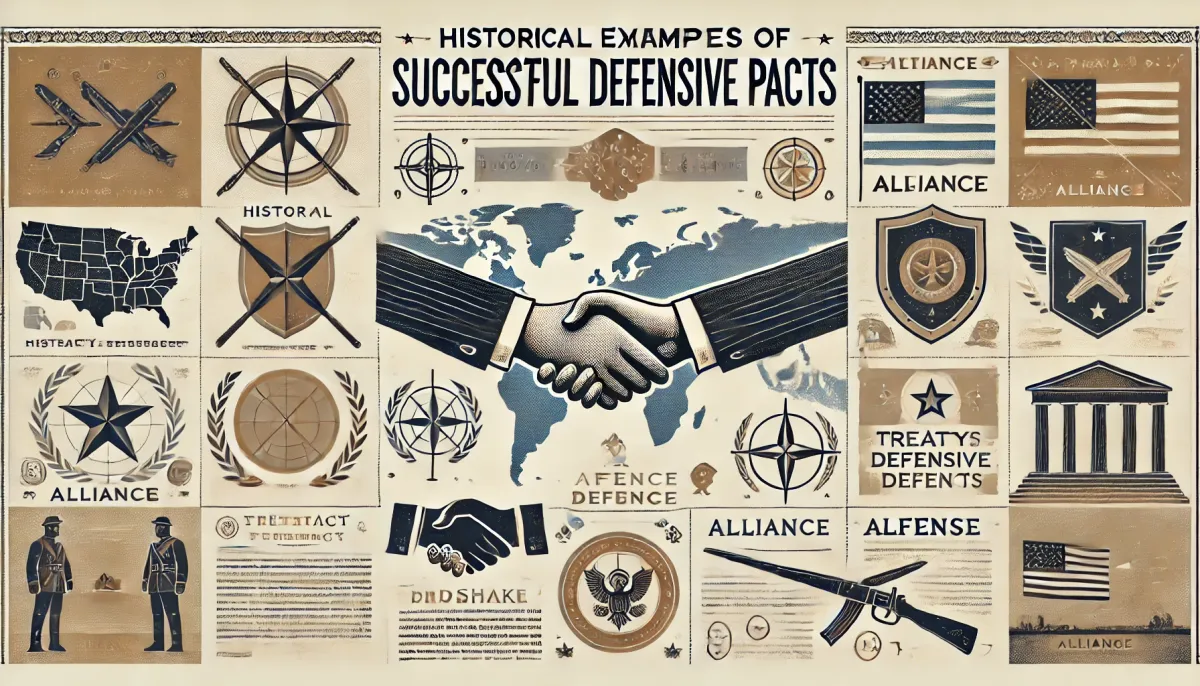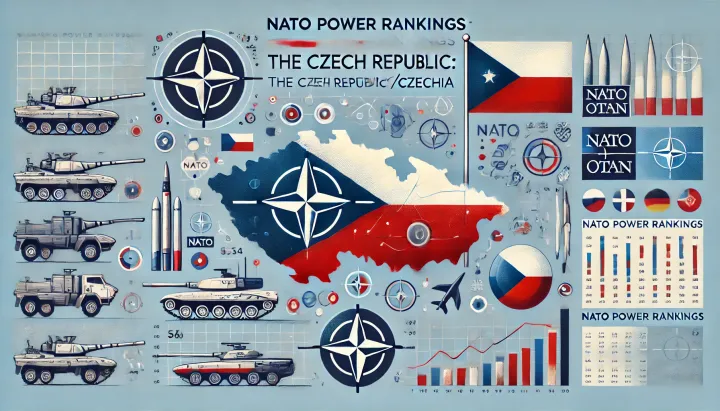Historical Examples of Successful Defensive Pacts
In the annals of history, defensive pacts have played an instrumental role in shaping international relations and maintaining global stability. From collective security agreements to strategic partnerships, these treaties have provided a framework for mutual defense and cooperation among nations.

In the annals of history, defensive pacts have played an instrumental role in shaping international relations and maintaining global stability. From collective security agreements to strategic partnerships, these treaties have provided a framework for mutual defense and cooperation among nations. In this article, we delve into some of the most successful defensive pacts, examining their origins, impacts, and enduring legacies.
The North Atlantic Treaty Organization (NATO)
The North Atlantic Treaty Organization, or NATO, stands as one of the most enduring and influential military alliances in modern history. Established in 1949, NATO was primarily conceived as a counterbalance to the Soviet Union's expanding influence in Eastern Europe post-World War II. The founding members, including the United States, Canada, and several Western European nations, committed to a mutual defense pact whereby an armed attack against one member would be considered an attack against them all.
Core Objectives and Achievements
NATO's core objectives have been to ensure the collective defense of its members, promote democratic values, and facilitate cooperation on security issues. Over the decades, NATO has successfully deterred aggression through a combination of military readiness and political solidarity. The alliance has expanded to include 30 member countries, adapting to new security challenges such as cyber threats and terrorism.
NATO's achievements are noteworthy, with its presence contributing to global peace and preventing the escalation of regional conflicts. Its success is often attributed to its ability to adapt and evolve, addressing new threats while maintaining a robust military presence. Additionally, NATO's commitment to collective defense has enhanced member states' security, ensuring a cohesive response to any potential threats.
One of the pivotal moments in NATO's history was its intervention in the Balkans during the 1990s. These missions were crucial in stabilizing the region and preventing further ethnic conflicts, showcasing NATO's capability in peacekeeping operations. Furthermore, NATO's role in Afghanistan highlights its adaptability and its efforts to combat global terrorism, reinforcing its importance in maintaining international security.
Impact on Global Security
The strategic partnership fostered by NATO has significantly contributed to the stabilization of Europe, preventing the outbreak of large-scale conflicts on the continent. Its successful military interventions in the Balkans during the 1990s and its ongoing missions in Afghanistan underscore NATO's role as a pivotal force in global security.
NATO's influence extends beyond military interventions; it has been a cornerstone in promoting diplomatic dialogue and cooperation among member states. This has led to enhanced political ties and mutual understanding, reducing the likelihood of misunderstandings and conflicts. The alliance's regular summits and meetings provide a platform for addressing global security issues, fostering collaboration among nations.
The presence of NATO has also served as a deterrent against potential aggressors, ensuring a balance of power in Europe and beyond. Its existence has dissuaded hostile actions, maintaining peace and stability in regions prone to conflicts. Moreover, NATO's partnerships with non-member countries have extended its influence, contributing to global security and stability.
NATO's impact on global security is evident in its adaptability to emerging threats, such as cyber warfare and terrorism. By constantly evolving and addressing new challenges, NATO remains a vital component in maintaining international peace, demonstrating the enduring importance of defensive pacts in a rapidly changing world.
The Warsaw Pact
In response to the formation of NATO, the Soviet Union and its Eastern European allies established the Warsaw Pact in 1955. This mutual defense pact aimed to consolidate Soviet influence over its satellite states and provide a unified military front against perceived Western aggression.
Structure and Strategy
The Warsaw Pact functioned as a collective security agreement, with the Soviet Union exercising significant control over the military and political affairs of member states. It served as both a deterrent against NATO forces and a means to suppress dissent within the Eastern Bloc, notably during the Hungarian Revolution of 1956 and the Prague Spring of 1968.
The structure of the Warsaw Pact was heavily centralized, with the Soviet Union at the helm, guiding military strategies and political decisions. This centralized control ensured that the Soviet Union could effectively manage its satellite states, maintaining a stronghold over Eastern Europe. The pact's military strategy focused on countering NATO's presence, ensuring a balance of power during the Cold War.
The Warsaw Pact's strategy also involved internal suppression, as seen during the Hungarian Revolution and Prague Spring. These events highlighted the Soviet Union's determination to maintain control over its allies, using military force to quell uprisings. Despite these measures, the pact's rigid structure and reliance on Soviet leadership eventually contributed to its downfall.
Legacy and Dissolution
Despite its initial success in maintaining Soviet hegemony, the Warsaw Pact ultimately dissolved in 1991 following the collapse of the Soviet Union. The dissolution marked the end of the Cold War and the beginning of a new era in international relations, with many former Warsaw Pact members eventually joining NATO.
The legacy of the Warsaw Pact is intertwined with the history of the Cold War, representing a period of intense geopolitical tension and rivalry. Its dissolution signaled the decline of Soviet influence in Eastern Europe, paving the way for democratic reforms and greater integration into the Western world. This has included the integration of Eastern European states like Slovakia and Czech Republic as NATO members. The collapse of the Warsaw Pact also highlighted the limitations of rigid, centralized alliances in a rapidly changing political landscape.
The transition of former Warsaw Pact members to NATO showcased a shift in global alliances, emphasizing the importance of adaptability and cooperation in contemporary international relations. This transition underscored the desire for stability and security among these nations, seeking protection under NATO's collective defense umbrella. The lessons learned from the Warsaw Pact's dissolution continue to inform the strategies of modern alliances, highlighting the need for flexibility and collaboration.
The end of the Warsaw Pact marked a significant turning point in history, illustrating the dynamic nature of international alliances and their impact on global politics. As former members embraced new partnerships, the legacy of the Warsaw Pact serves as a reminder of the complexities and challenges of maintaining a cohesive and effective defensive pact.
The Anglo-Portuguese Alliance
Dating back to the Treaty of Windsor in 1386, the Anglo-Portuguese Alliance is recognized as the oldest continuous military alliance in the world. This strategic partnership between England (later the United Kingdom) and Portugal has endured for over six centuries, exemplifying the enduring nature of mutual defense agreements.
Historical Significance
The alliance has been pivotal in numerous historical conflicts, including the Napoleonic Wars and World War II. Portugal's strategic geographical position provided the UK with crucial naval bases and support, facilitating British military operations across the globe.
The historical significance of the Anglo-Portuguese Alliance is evident in its role during key historical events. During the Napoleonic Wars, the alliance was instrumental in countering French expansion, with Portugal serving as a strategic ally for Britain. The partnership provided a secure foothold in Europe, allowing for effective military campaigns against Napoleon's forces.
World War II further highlighted the importance of this alliance, with Portugal's Azores islands serving as vital bases for Allied operations. The alliance ensured that the UK had access to critical resources and support, contributing to the success of Allied efforts. The enduring nature of this alliance underscores its significance in shaping the course of history, demonstrating the value of long-lasting partnerships.
The historical impact of the Anglo-Portuguese Alliance extends beyond military conflicts, influencing diplomatic relations and cultural exchanges between the two nations. This alliance has fostered a deep-rooted friendship, exemplifying the strength of diplomatic ties that withstand the test of time.
Contemporary Relevance
While the original defense treaty has evolved, the Anglo-Portuguese Alliance continues to symbolize the strength of diplomatic ties and mutual cooperation. Both nations remain committed to supporting each other in defense and security matters, exemplifying the long-lasting impact of successful defensive pacts.
In contemporary times, the Anglo-Portuguese Alliance remains relevant as both nations continue to collaborate on various international issues. This collaboration extends beyond defense, encompassing economic partnerships, cultural exchanges, and joint efforts in global forums. The alliance serves as a model for enduring diplomatic relationships, highlighting the importance of mutual respect and shared values.
The alliance's contemporary relevance is also reflected in its adaptability to modern challenges, addressing issues such as cybersecurity and terrorism. By working together, the UK and Portugal strengthen their collective security, ensuring a robust response to emerging threats. This adaptability underscores the alliance's enduring nature, demonstrating its ability to evolve with changing geopolitical landscapes.
The Anglo-Portuguese Alliance continues to inspire other nations, showcasing the benefits of long-term partnerships based on trust and cooperation. Its success story serves as a testament to the power of strategic alliances in maintaining peace and stability, providing valuable lessons for future diplomatic endeavors.
The Southeast Asia Treaty Organization (SEATO)
Formed in 1954, the Southeast Asia Treaty Organization (SEATO) was established as a collective defense pact aimed at containing the spread of communism in Southeast Asia. The organization included countries such as the United States, United Kingdom, France, Australia, and several Southeast Asian nations.
Goals and Challenges
SEATO sought to promote regional stability and prevent communist insurgencies through military and economic cooperation. However, the organization faced challenges due to divergent interests among member states and the lack of a unified military command.
SEATO's primary goal was to prevent the spread of communism in Southeast Asia, providing a collective defense framework for its member states. The organization aimed to achieve this through military cooperation, economic assistance, and the establishment of a network of alliances. Despite its noble objectives, SEATO struggled with internal challenges that hindered its effectiveness.
One of the main challenges faced by SEATO was the lack of a unified military command, which made coordinated responses to threats difficult. The diverse interests and priorities of member states further complicated decision-making processes, leading to disagreements and inefficiencies. Additionally, the geographical dispersion of SEATO members added to the complexity of coordinating defense efforts, limiting the organization's overall impact.
SEATO's challenges also stemmed from its reliance on external powers, such as the United States, for military and financial support. This reliance created an imbalance of power within the organization, affecting its cohesion and ability to address regional threats independently. Despite these challenges, SEATO played a crucial role in shaping Cold War dynamics in Southeast Asia, highlighting the complexities of regional defense pacts.
Decline and Disbandment
SEATO's effectiveness waned in the face of geopolitical shifts and the Vietnam War. The organization was eventually disbanded in 1977, yet its existence underscored the importance of regional defense pacts during the Cold War.
The decline of SEATO was marked by a series of geopolitical shifts, including the changing nature of the Cold War and the increasing complexity of regional conflicts. The Vietnam War exposed the limitations of SEATO's collective defense strategy, as member states struggled to present a united front. This lack of cohesion ultimately led to the organization's disbandment in 1977.
Despite its challenges, SEATO's existence highlighted the significance of regional defense pacts in addressing global security threats. The organization underscored the importance of cooperation and collaboration among nations in maintaining regional stability. While SEATO's disbandment marked the end of a specific era, its legacy continued to influence the development of future defense alliances.
The lessons learned from SEATO's decline continue to inform contemporary defense strategies, emphasizing the need for adaptability and unity in addressing emerging security challenges. The organization's history serves as a reminder of the complexities of regional defense pacts, offering valuable insights into the dynamics of international alliances.
The Rio Pact
The Inter-American Treaty of Reciprocal Assistance, commonly known as the Rio Pact, was signed in 1947 by countries in the Americas. This mutual defense agreement was designed to establish a collective security framework for the Western Hemisphere in response to external aggression.
Principle of Collective Defense
The Rio Pact introduced the principle that an attack against one member state would be considered an attack against all, similar to NATO's Article 5. This provided a mechanism for coordinated military response and fostered greater political cooperation among American nations.
The principle of collective defense enshrined in the Rio Pact was a groundbreaking concept for the Western Hemisphere, promoting unity and solidarity among member states. This principle ensured that any act of aggression against one country would elicit a collective response, enhancing regional security and deterring potential threats. The Rio Pact's emphasis on collective defense fostered a spirit of cooperation and mutual support among American nations.
The Rio Pact's implementation of collective defense mechanisms strengthened political ties and encouraged collaboration on security issues. This cooperation extended beyond military responses, encompassing economic and diplomatic initiatives aimed at maintaining peace and stability. The pact's framework provided a foundation for addressing regional conflicts, promoting dialogue and negotiation as tools for conflict resolution.
The principle of collective defense remains a cornerstone of the Rio Pact's legacy, highlighting the power of unity in fostering regional stability. This principle continues to inspire modern defense agreements, emphasizing the importance of solidarity and cooperation in addressing global security challenges.
Impact on Regional Security
Throughout its history, the Rio Pact has been invoked on several occasions to address regional conflicts and crises. While its influence has diminished over time, the treaty remains a testament to the power of collective security agreements in fostering regional stability.
The Rio Pact's impact on regional security is evident in its role in addressing various conflicts and crises throughout the Americas. By providing a framework for collective response, the pact facilitated coordinated efforts to resolve disputes and maintain peace. Its invocation during conflicts such as the Cuban Missile Crisis underscored its relevance in addressing regional security threats.
Despite its diminishing influence in recent years, the Rio Pact continues to serve as a model for collective security agreements. Its emphasis on cooperation and mutual defense has inspired similar treaties and alliances, reinforcing the importance of strategic partnerships in maintaining regional stability. The pact's legacy is a testament to the enduring power of collective security agreements in promoting peace and security.
The Rio Pact's historical impact extends beyond its direct involvement in regional conflicts, influencing the development of defense strategies and alliances in the Americas. Its principles continue to resonate in contemporary security discussions, offering valuable insights into the dynamics of international cooperation and alliance-building.
Conclusion
Defensive pacts have been pivotal in shaping the course of history, providing nations with the means to deter aggression and maintain peace. From the enduring legacy of NATO to the historical significance of the Anglo-Portuguese Alliance, these military alliances underscore the importance of strategic partnerships in a complex and ever-changing world. As we continue to navigate contemporary security challenges, the lessons learned from successful defensive pacts remain as relevant as ever.
The enduring success of defensive pacts lies in their ability to adapt to changing geopolitical landscapes, addressing emerging threats while maintaining core principles of cooperation and mutual defense. These alliances have proven instrumental in preventing conflicts, fostering diplomatic dialogue, and promoting regional stability. As history has shown, the power of collective security agreements is not only in their military might but also in their capacity to build bridges and strengthen international relations.
The lessons gleaned from historical defensive pacts offer valuable insights for contemporary and future alliances. They highlight the importance of flexibility, unity, and collaboration in navigating complex security environments. As global challenges evolve, the enduring legacies of these alliances serve as a guiding light, reminding us of the power of strategic partnerships in safeguarding peace and security.
In an increasingly interconnected world, the relevance of defensive pacts remains paramount. By learning from the successes and challenges of historical alliances, nations can continue to build resilient and effective partnerships, ensuring a safer and more secure future for all.

